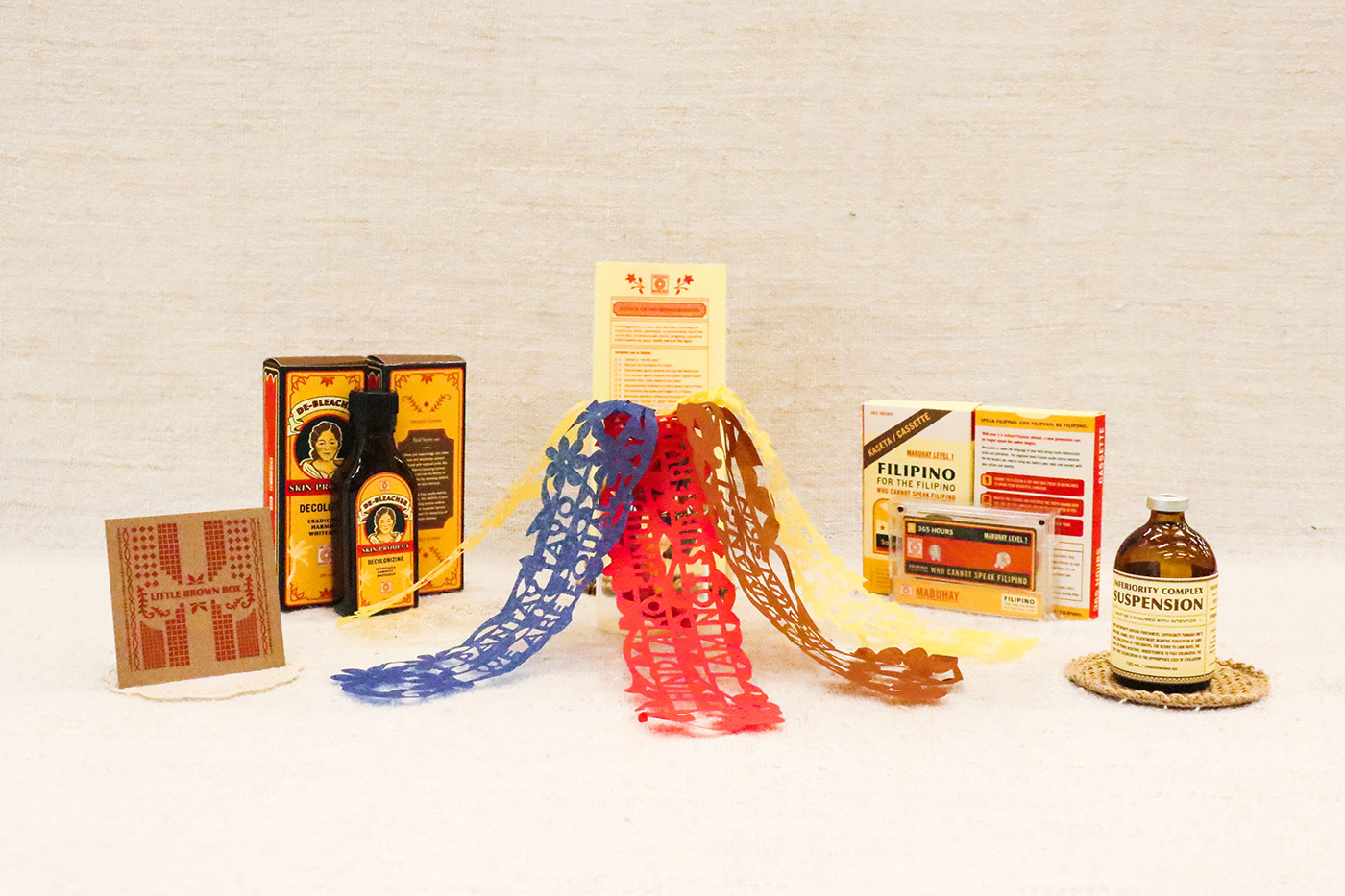
An iconic Filipino cultural object, the balikbayan box, is filled with foreign brand products meant to connect the Filipino diaspora back to their loved ones in the Philippines. I was raised in one of the most Westernized cities in Asia: Manila, Philippines. I grew up speaking English and my parents or peers did not stress the importance of learning Tagalog and the nationalistic pride that would come with it. My more affluent peers and their families had a clear preference to visit other countries before exploring their own, and foreign brands were deemed more desirable (purchasing local things would be considered “less cool”).
Similar to the concept of the balikbayan box, I realized that the colonizer's values continue to be perpetuated to this day. Filipinos unconsciously look to Western ideals and people—imported goods are considered superior while anything local is viewed as substandard, foreigners are idolized, skin is whitened, people are judged based on their fluency in English and the working class leaves the country in search of better opportunities.
Little Brown Box aims to use design as a lens to examine these manifestations of internalized colonization as speculative cures and spark discussion on reconstructing what the Filipino identity is. this project was a way for me to come to terms with my own colonial mentality. Are we only perpetuating being colonizers of our own people?
Little Brown Box aims to use design as a lens to examine these manifestations of internalized colonization as speculative cures and spark discussion on reconstructing what the Filipino identity is. this project was a way for me to come to terms with my own colonial mentality. Are we only perpetuating being colonizers of our own people?



The cultural probe designed as part of the research process was a way to connect with the Filipino Diaspora, to gain inspiration through the users' self-reports, to supplement further research, and gather personal information about the participants' thoughts and activities. On a more visual level, the probe was used as an opportunity to start tightening the project’s visual language and graphics —experimenting with cultural and decorative aesthetic and vernacular. Areas of interest included food culture in the Filipino diaspora, familial influence on morals and values, and nationalistic pride.

This project serves as a lens to examine the subtle and not so subtle effects of Philippine colonization through the medium of material artifacts. How do these speak to the issues we face as post-colonials? Through analyzing these objects as a starting point, how can these be discussion starters for the broader issue that is Colonial Mentality?
It was important to present such a heavy topic in a way that could still be understood and serve as a point of discussion for those who are not necessarily aware of Filipino culture.

Skin De-Bleacher
Eurocentric Beauty Standards
Today, many Filipinos around the world continue to perpetuate the notion that dark is dirty and that having whiter skin makes one more beautiful. This desire to have light skin stems from the Philippines’ European colonial history. This is evident in the ways that the media, film, and beauty industries represent Filipinos: Euro-centric Filipinos are at the forefront of the media. Despite the mental health issues it poses, the skin whitening industry is one of the biggest in the Philippines.

Notice of Microaggression
Toleration of Modern Day Oppression
Today, many Filipino immigrants are discriminated because they are willing to take on more laborious jobs with longer hours, which Westerners perceive as taking away job opportunities. One of the biggest symptoms of colonial mentality is the tolerance or denial of modern-day oppression. Many choose to simply accept the oppression they face today to avoid seeming too threatening, in order to assimilate into Western culture - or they do not recognize certain racial microaggressions as offensive.

Inferiority Complex Suspension
Inferiority Complex as a Result of Colonization
Filipinos are the second-largest Asian group in the United States, yet are considered an invisible minority and are negatively referred to as the “Little Brown Brothers.” The homogenization of Filipinos into the Asian category can be problematic because their struggles with colonization are especially unique; this underrepresentation leads to racist attacks, and furthermore, feelings of shame and denial of one’s ethnicity.

Language Cassette Tape
Loss of Native Tongue
Filipinos in North America reported feeling embarrassed by less Westernized Filipinos who spoke broken English. Many also reported not wanting to teach their native tongue to their children because it was “unnecessary” or “unimportant.” This stems from the desire to assimilate and fit into the Western environment and people, in order to not be perceived by the West as a new immigrant, or “fresh-off-the-boat.” Additionally, English was made one of the two national languages of the Philippines.

Pabalat Papercut Wrapping
Lack of Nationalism and Tradition
Filipinos continue to carry on these subservient attitudes, believing that Western powers are superior while simultaneously oppressing their own kind through their colonial mentality. Many continue to internalize and project this oppression onto others, with subservience so ingrained into their attitudes and behavior, that in order to change it needs to be consciously recognized and called out by using festive pabalat to communicate salient messages and collaborating with one of the last remaining pabalat artists, Naty Ocampo, from the Philippines.






Little Brown Box was exhibited at The Show at Emily Carr University (2019). Those visiting the exhibit were able to interact with each individual object, read the process publication, and take a project card for themselves. The layout of the exhibit was designed to invite the viewer to truly interact with the object, to pick each one up and observe the tiniest details.








